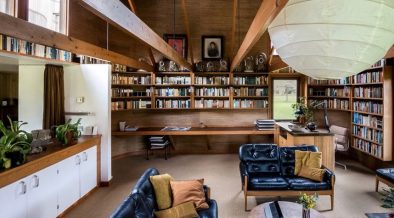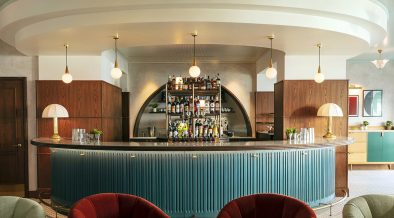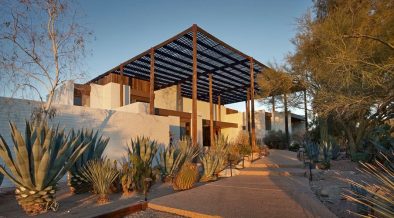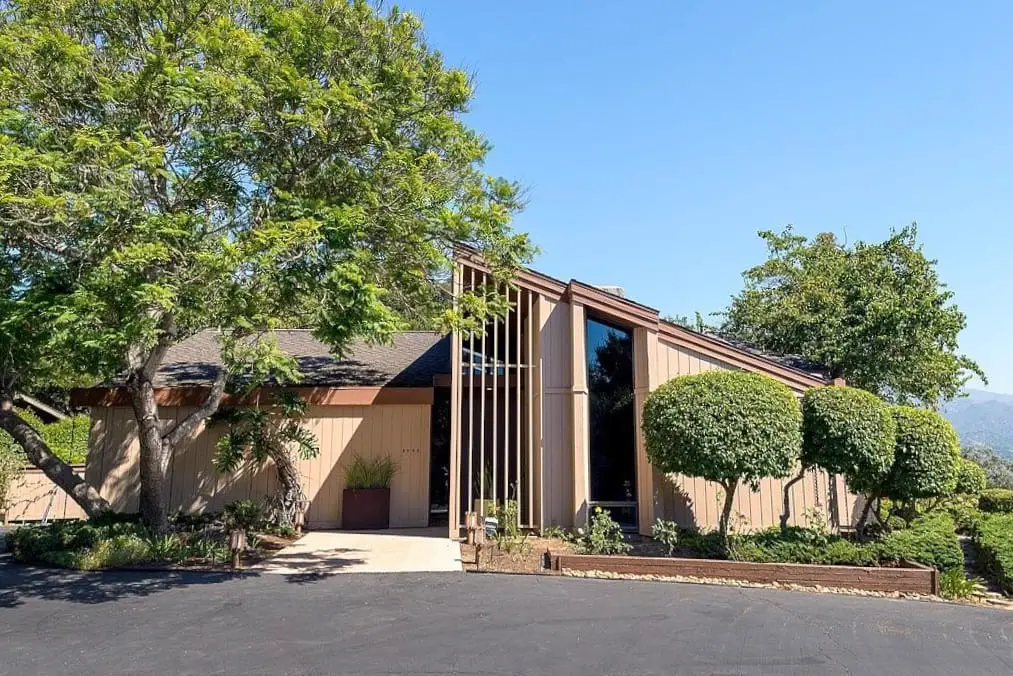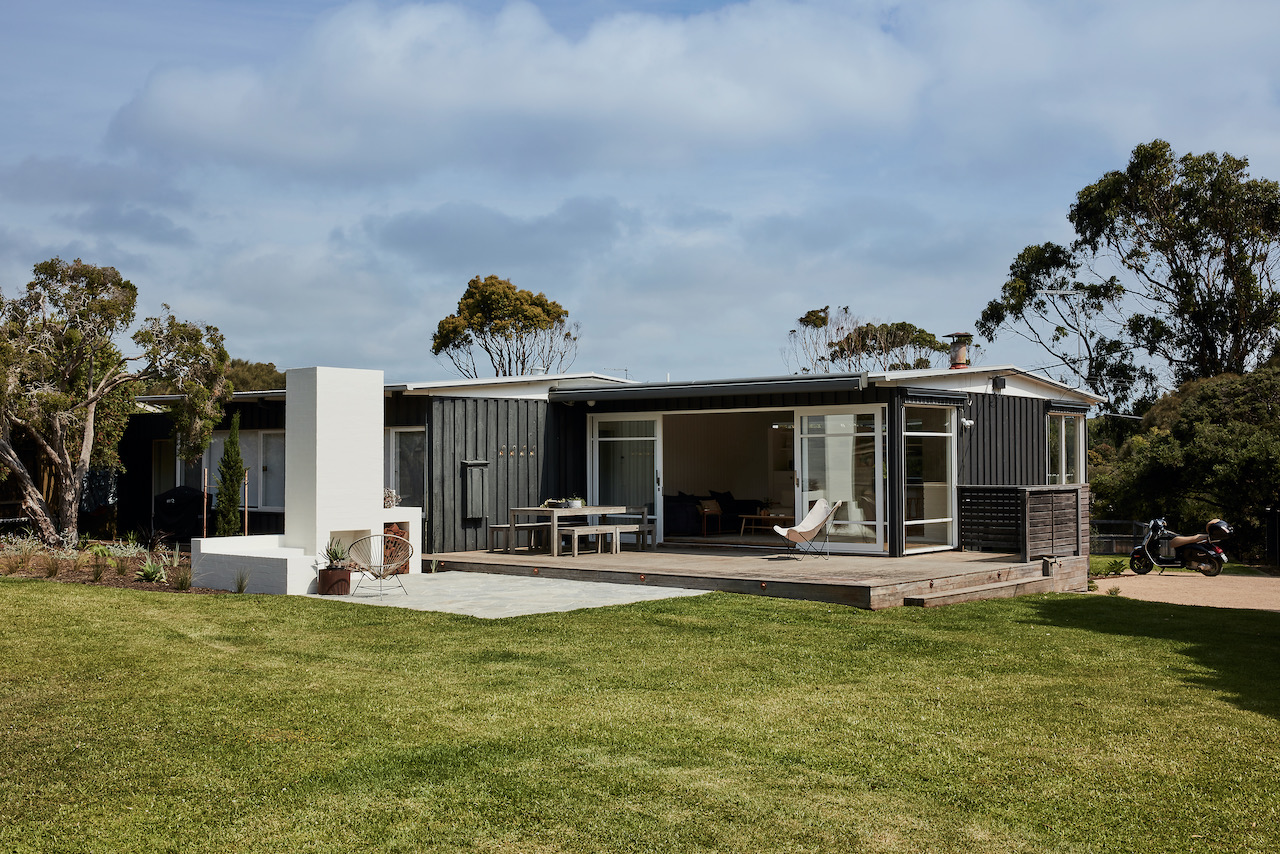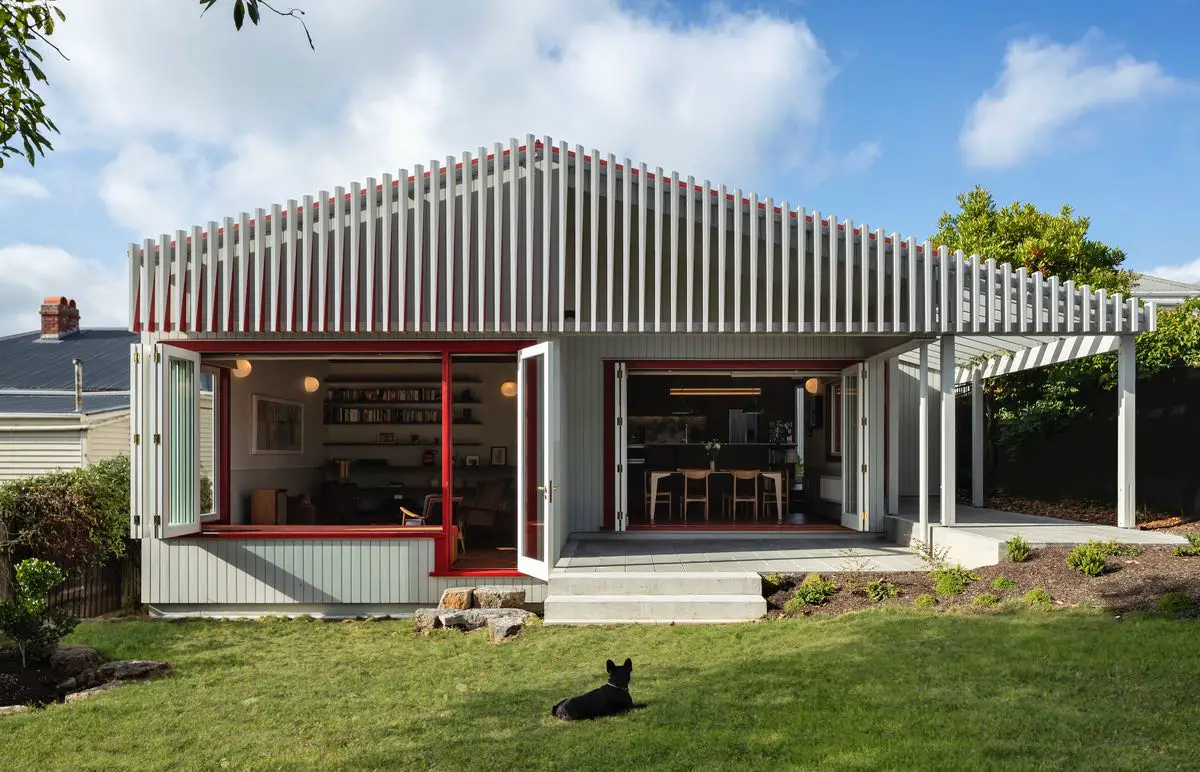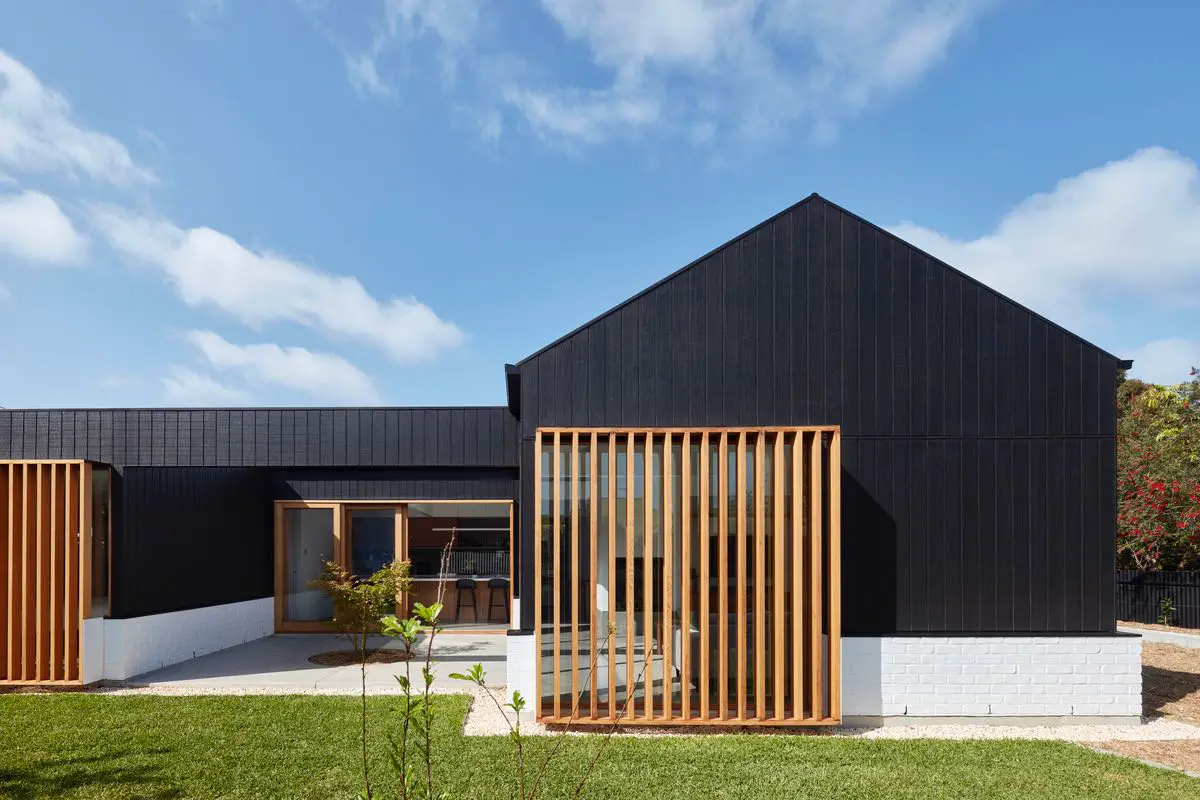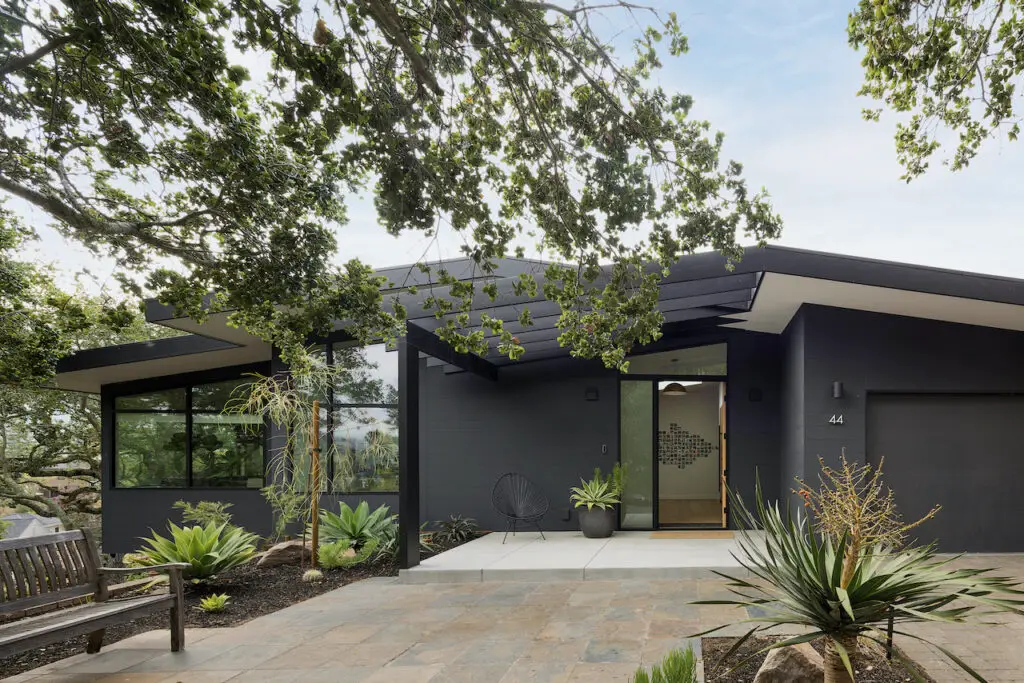
In a hillside cul-de-sac in the Oakland hills, a group of unique mid-century modern homes form the end of the street. ODS Architecture worked to restore this home, and due to the great bones of the house, only a light design touch was needed.
This home, built in the late 1950’s, had awkward stairs connecting the downstairs family room to the upper floor living areas, one being outdoors and the other in the middle of the house.
This was solved with a new stair at the front entry opening up the floor plan as well as via vaulted ceilings, larger windows and by combining the kitchen, dining and living areas in a high ceiling light-filled space.
A wood palette sets the scene for the family’s art and homewares with pops of black-and-white accents to help tie everything together. The hillside location was used to create different areas of outdoor activities. A new bay window with a built-in seat and deck faces San Francisco Bay and a new large level deck off the kitchen makes an active gathering spot for outdoor dining. We were excited to chat with the architects to find out more.
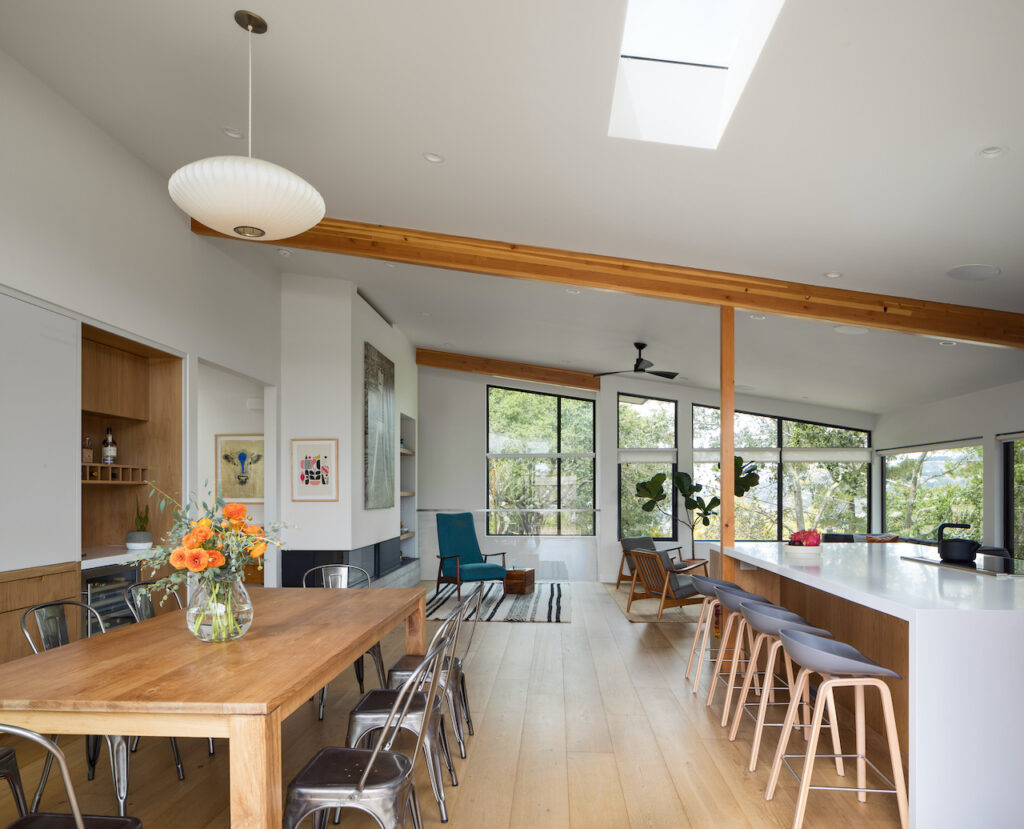
Do you have any details on the client brief?
“It was important to the clients to retain some earthiness, some bohemian touches, rather than an overly polished and slick design. They wanted the design to be modern but cozy, not too cold and not too precious.
They wanted a home that would be heavily used and lived-in, not a perfectly stylized museum; they didn’t want to worry about kids, guests or possible renters messing anything up. So, choosing finishes that were durable and not too delicate was an essential design driver.
They also wanted space to support their hobbies and interests: For the kids, that was a basketball hoop, and for the one of the owners, that was garage or driveway space to work on car restoration projects.”
What mid-century influences did you want to include?
“The clients wanted the design to reflect the hallmarks of midcentury modern homes: after open floor plans, clean lines and simplicity.
We took our design cues from the owner’s desire to maintain the mid-century modern design of the house, especially at the front street façade. We basically extruded the house form forward rather than redoing it entirely.”
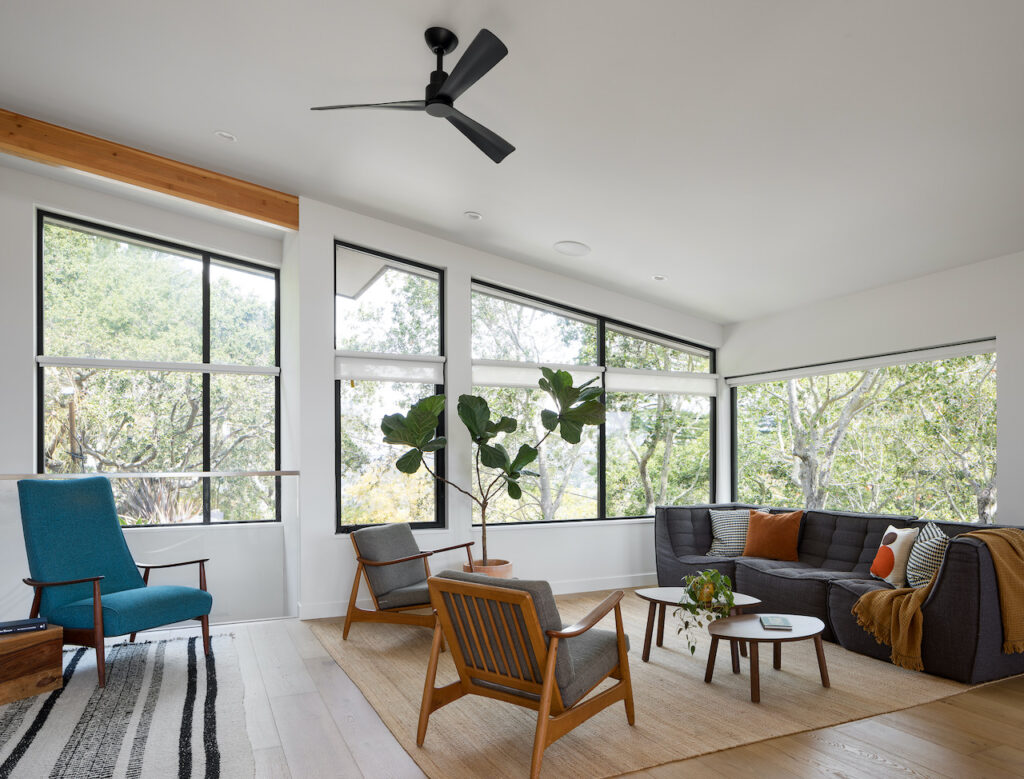
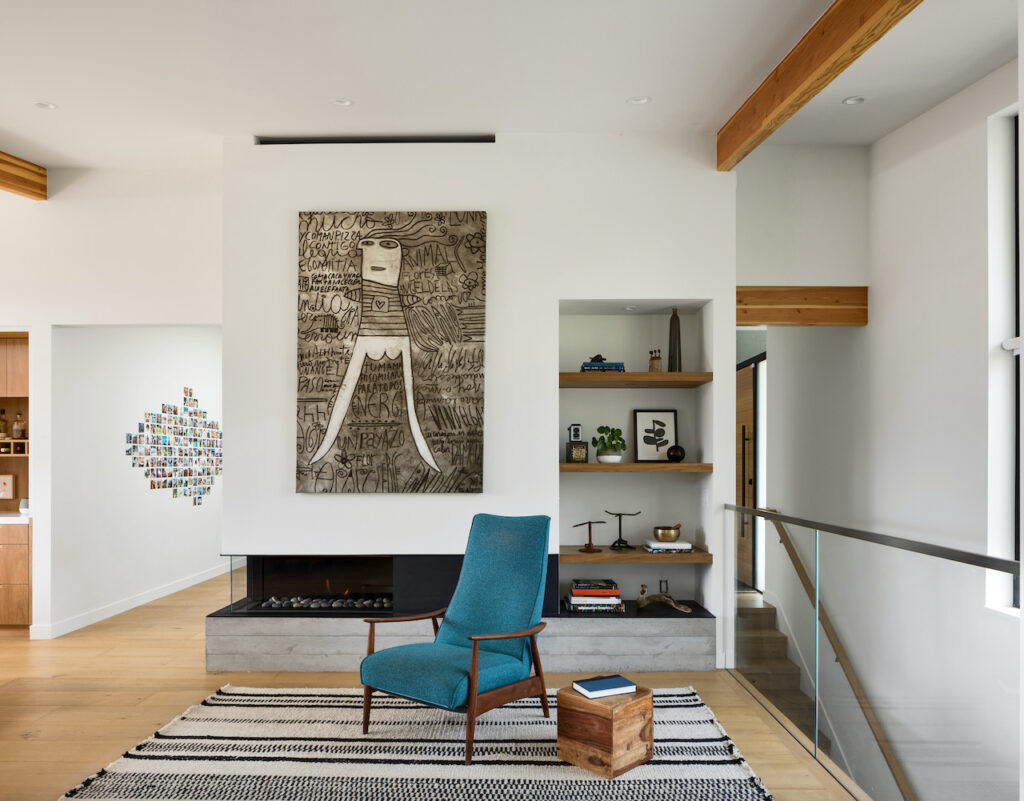
What in your opinion are the best features of the home?
“The un-fussy open plan living, dining, kitchen room whose spaces flow into the rear yard desk with big roof overhangs for visual expression and sun protection. The upward angling vaulted ceiling is both an exterior feature and an interior light and space capturing element.
Also, the design takes good advantage of a hillside lot, with deceptive slopes that were used to make opportunities for family hang-out spaces by the kitchen, mom and dad private space off the primary bedroom, and a large level sports area for the kids off the downstairs family room.” – Alan Ohashi, Principal Architect
As to what is so special about this period in American design, Alan Ohashi, Principal Architect, says: “I think it reflected an American vision of progressive, strong, futuristic architecture. Ranch style homes like this one are examples of this attitude, plenty of space, open floor plan designs, no closed off dining or living rooms opening them up to each other represented a kind of freedom from European based formality. The Hanna Barbera cartoons like the Jetsons were a visual statement that matched this feeling.”
Finally, we wanted to know what tips could be offered to our readers for people buying a midcentury home. Ohashi says: “The basics should be reviewed, structure, foundation, plaster or sheetrock walls should have no cracks or evidence of settling.
Typically houses from this era have minimal or no insulation, single glazed windows and we try and upgrade these plus all the building systems, heating, cooling, plumbing, electrical when we design our remodels.
Electrical needs today are far greater than what we needed many years ago, so we are constantly upgrading 100 amp panels to 200 amps and more.”
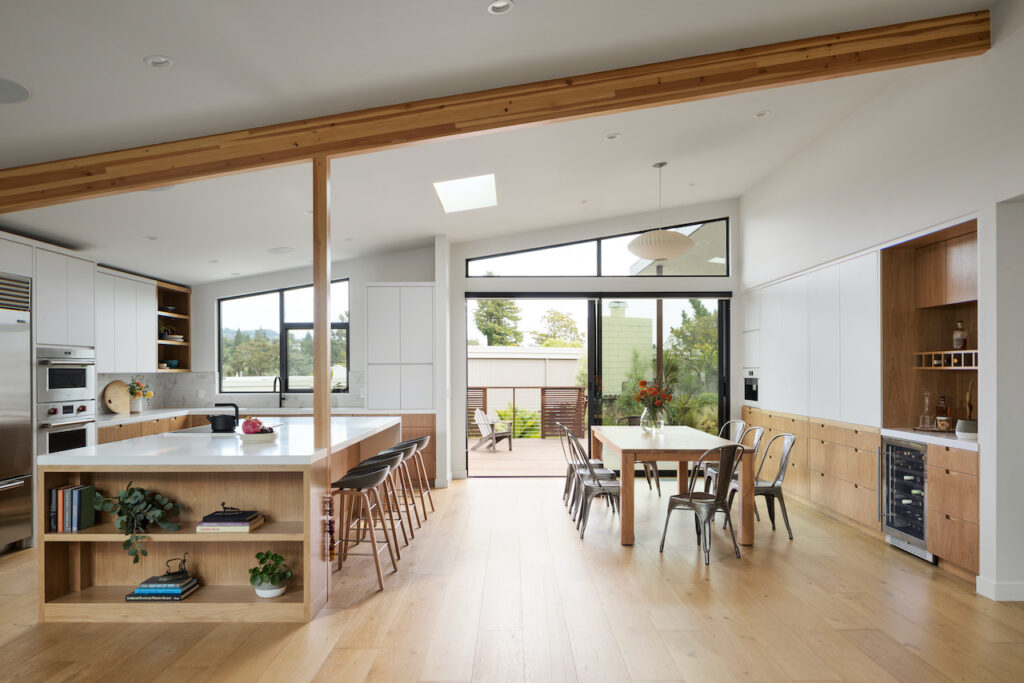
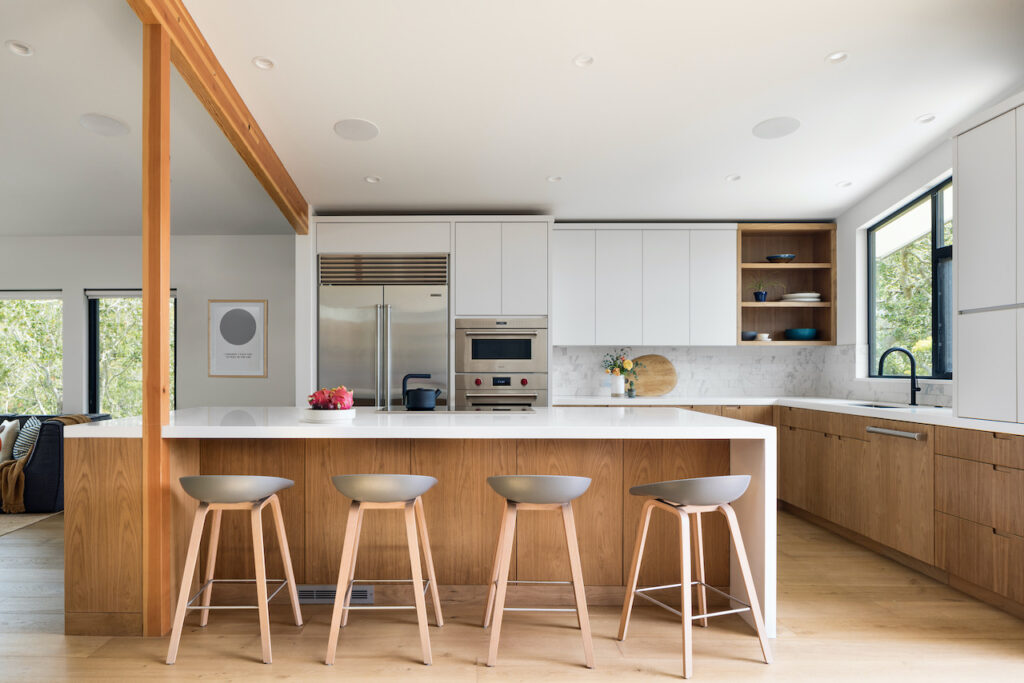
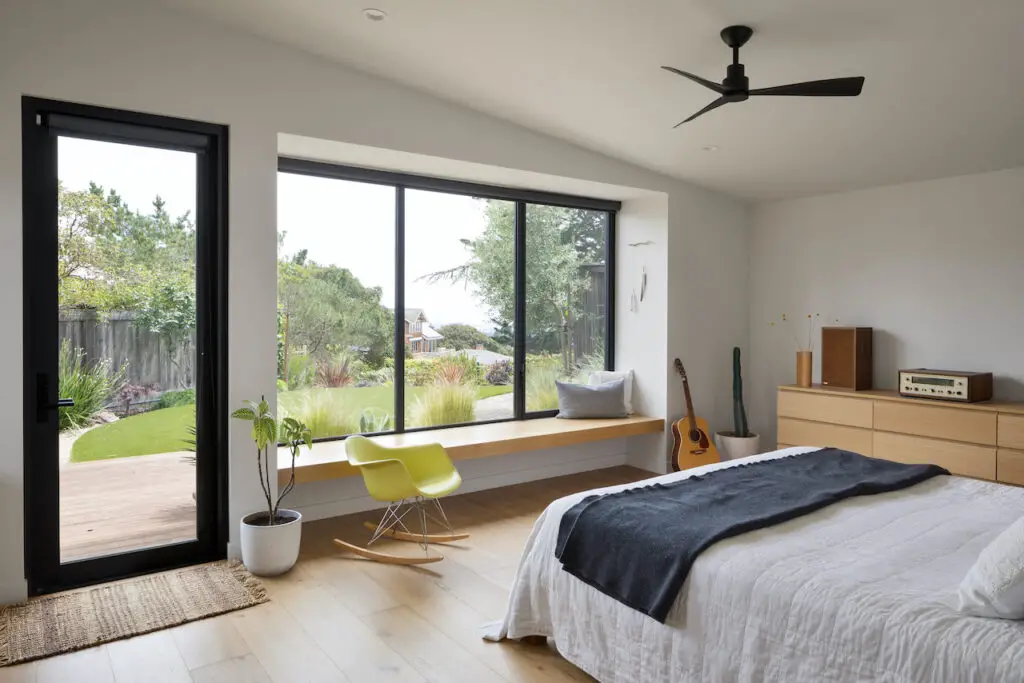
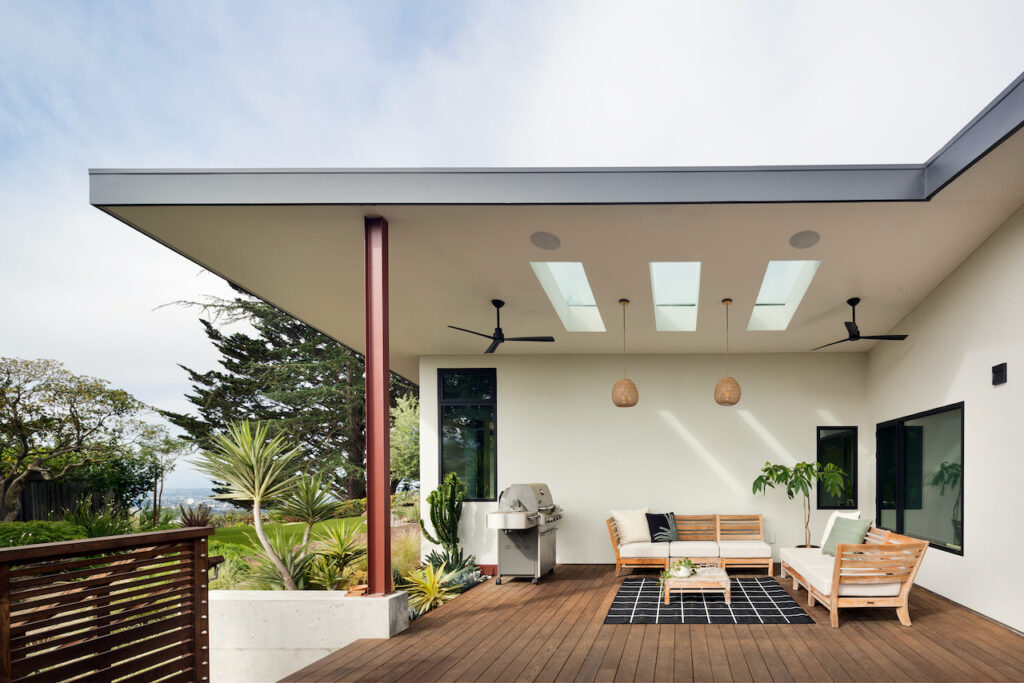
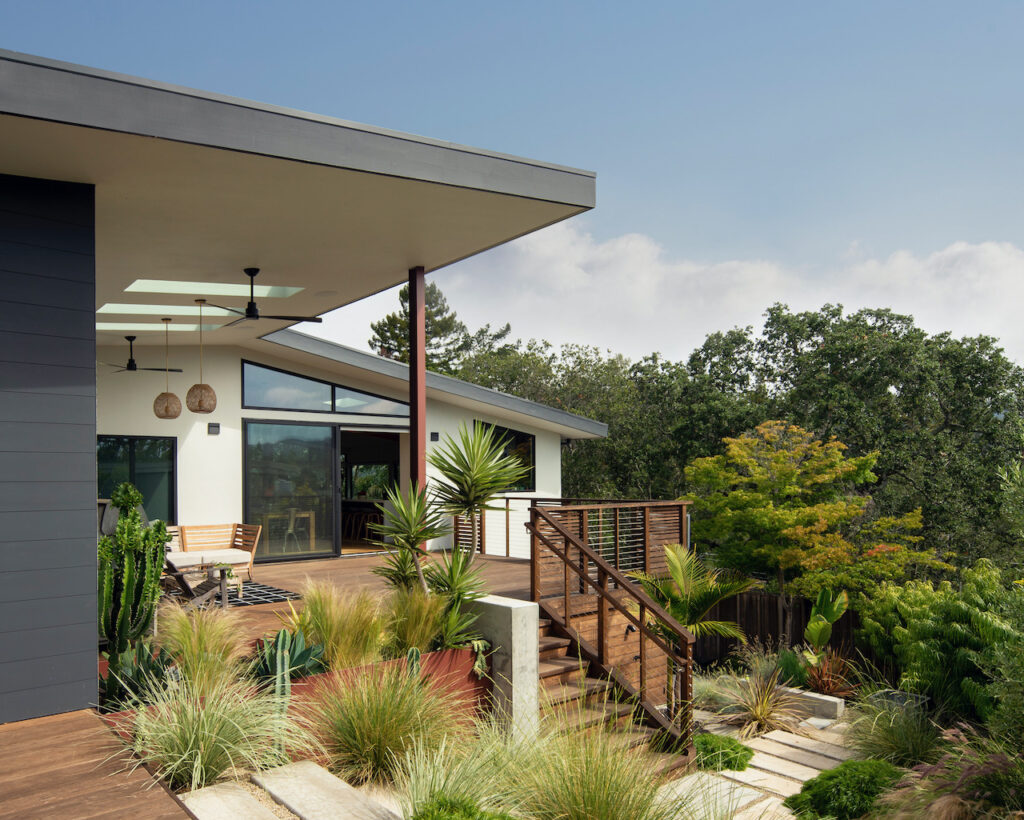
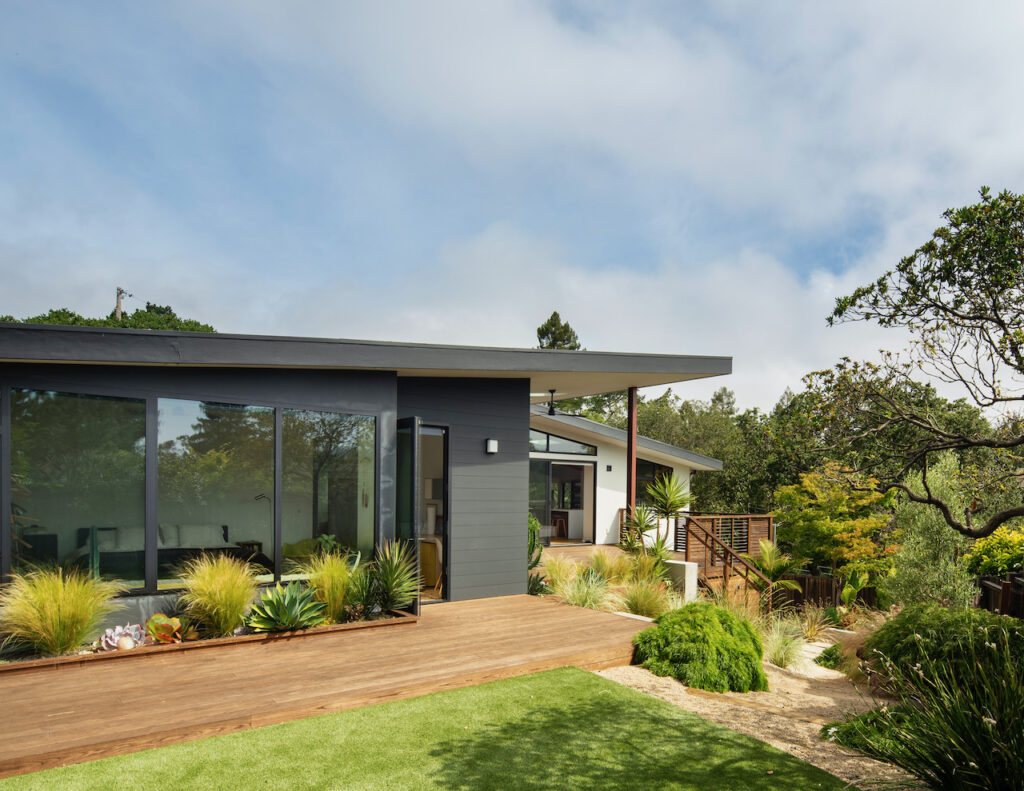
Photos by Paul Dyer Photography
General Contractor: Michael J. Arruda Construction





